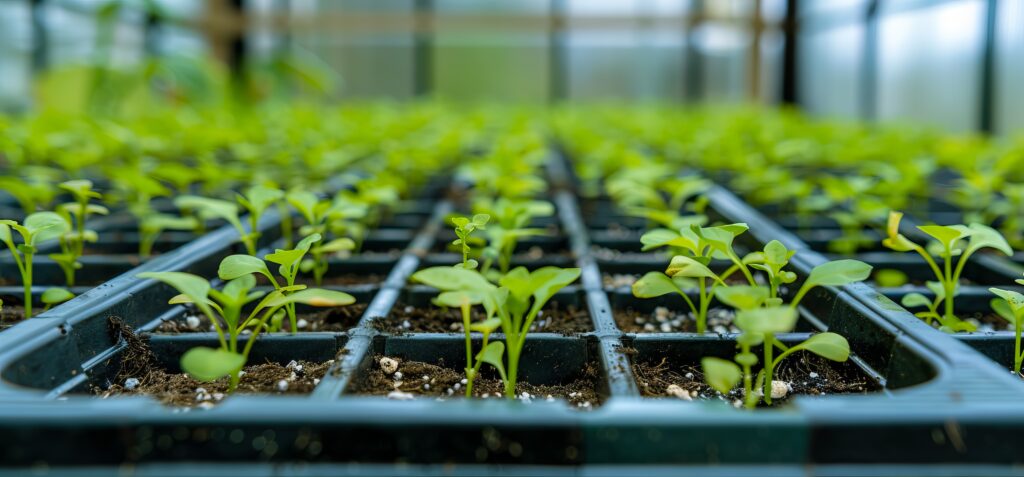Understanding Nutrient Mobility: Key to Diagnosing Plant Deficiencies
Just like humans, the basis of good plant health is proper nutrient availability; however, once inside plants, nutrients behave differently. Some can always move freely to areas of active growth, while others are limited to areas where they are initially incorporated. By understanding nutrient mobility and immobility, growers can more accurately diagnose and address deficiencies, ultimately ensuring optimal plant performance.
What Is Nutrient Mobility?
Nutrient mobility refers to the ability of a nutrient re-mobilize and move within a plant. Mobile nutrients can readily relocate to areas where they are needed most, while immobile nutrients remain fixed in the tissue they were originally absorbed. This distinction is critical when diagnosing nutrient deficiencies.
- Mobile Nutrients: These nutrients move readily through the plant’s vascular system, most commonly from older leaves to younger growth. Deficiency symptoms often appear in older leaves first because the plant reallocates these nutrients to support new growth.
- Examples: Nitrogen (N), Phosphorus (P), Potassium (K), Magnesium (Mg)
- Immobile Nutrients: These nutrients remain in the tissues where they are initially deposited. Deficiency symptoms typically show up in newer growth since these nutrients cannot be redistributed within the plant.
- Examples: Calcium (Ca), Boron (B), Iron (Fe), Zinc (Zn)

Recognizing Deficiency Symptoms
Mobile Nutrient Deficiencies:
Deficiencies in mobile nutrients often manifest as issues in older leaves:
- Nitrogen: Yellowing or chlorosis starting in older leaves.
- Phosphorus: Dark green or purplish discoloration in older foliage.
- Potassium: Marginal leaf burn or browning, especially at the edges of older leaves.
Immobile Nutrient Deficiencies:
Immobile nutrient deficiencies are more evident in younger leaves and new growth:
- Calcium: Distorted or curled young leaves, often accompanied by tip burn.
- Iron: Interveinal chlorosis (yellowing between veins) in young leaves.
- Boron: Brittle or malformed new growth.
Why Mobility Matters in Fertilizer Programs
Understanding nutrient mobility can help growers:
- Tailor Fertilizer Applications: Mobile nutrients may need to be supplied more frequently, especially in fast-growing crops, to prevent deficiencies in older tissues.
- Address Symptoms Effectively: Identifying whether a deficiency appears in older or younger leaves helps pinpoint the missing nutrient.
- Optimize Timing and Delivery: Immobile nutrients require consistent availability in the root zone, as plants cannot redistribute these nutrients once absorbed.
Solutions from Plant-Prod
Plant-Prod’s comprehensive line of water-soluble fertilizers provides targeted solutions for both mobile and immobile nutrient management:
- Plant-Prod 20-20-20: A balanced fertilizer that ensures a steady supply of mobile macronutrients like nitrogen, phosphorus, and potassium.
- Plant-Prod 12-2-14 CaMg: Formulated with high levels of calcium and magnesium, this formula addresses deficiencies in immobile nutrients and supports strong, healthy growth.
- Plant-Prod Chelated Micronutrients: These products deliver essential immobile micronutrients such as iron, zinc, and boron in a form readily available to plants, preventing deficiency symptoms in new growth and quickly correcting deficiencies when they appear.
By incorporating these products into your fertilizer program, you can maintain optimal nutrient levels and prevent deficiency symptoms before they impact crop quality.

Identifying and addressing nutrient deficiencies begins with understanding nutrient mobility and its role in plant health. Plant-Prod’s innovative fertilizer solutions can help you meet your crops’ specific needs with precision.
Ready to take your fertilizer program to the next level? Visit our distributors page to find a supplier and discover how Plant-Prod can support your growing success!
